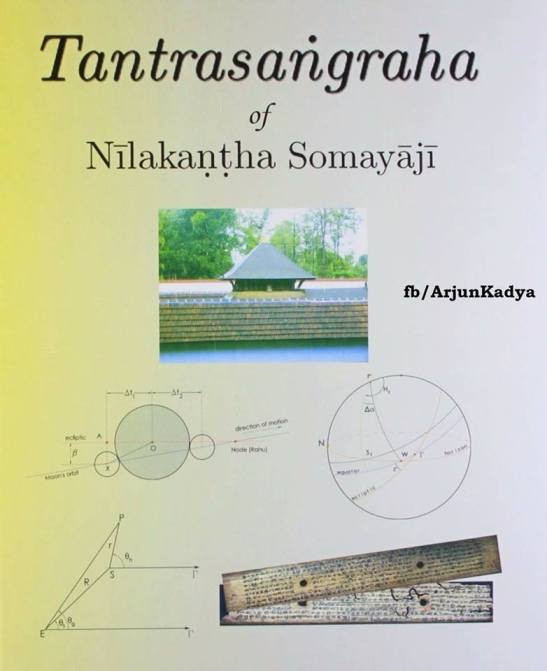Tantrasamgraha – a treatise of Nilakanta Somayajji of 15th century.” In astronomy

“A remarkable synthesis of Indian spherical astronomical knowledge occurs in a passage in Tantrasamgraha – a treatise of Nilakanta Somayajji of 15th century.” In astronomy, the spherical triangle formed by the zenith, the celestial north pole and the Sun is called the astronomical triangle. Its sides and two of its angles are important astronomical quantities. The sides are 90° – φ where φ is the observer’s terrestrial latitude, 90° – δ where δ is the Sun’s declination and 90° – a where a is the Sun’s altitude above the horizon. The important angles are the angle at the zenith which is the Sun’s azimuth and the angle at the north pole which is the Sun’s hour angle. The problem is to compute two of these elements when the other three elements are specified. There are precisely ten different possibilities and Tantrasamgraha contains discussions of all these possibilities with complete solutions one by one in one place. “The spherical triangle is handled as systematically here as in any modern textbook.”
The terrestrial latitude of an observer’s position is equal to the zenith distance of the Sun at noon on the equinctial day. The effect of solar parallax on zenith distance was known to Indian astronomers right from Aryabhata. But it was Nilakantha Somayaji who first discussed the effect of solar parallax on the observer’s latitude. Tantrasamgraha gives the magnitude of this correction and also a correction due to the finite size of the Sun.
Tantrasamgraha contains a major revision of the older Indian planetary model for the interior planets Mercury and Venus and, in the history of astronomy, the first accurate formulation of the equation of centre for these planets. His planetary system was a partially heliocentric model in which Mercury, Venus, Mars, Jupiter and Saturn orbit the Sun, which in turn orbits the Earth, similar to the Tychonic system later proposed by Tycho Brahe in the late 16th century. Nilakantha’s system was more accurate at predicting the heliocentric motions of the interior than the later Tychonic and Copernican models, and remained the most accurate until the 17th century when Johannes Kepler reformed the computation for the interior planets in much the same way Nilakantha did. Most astronomers of the Kerala school who followed him accepted his planetary model.
– Hinduism Demystified,







